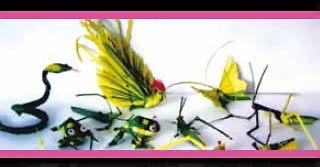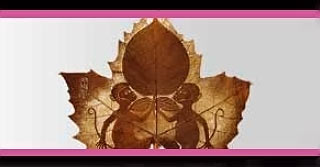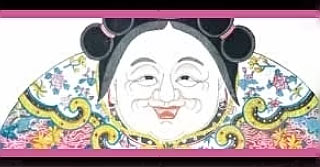|

HUAI’AN |
EGGSHELL CARVING
24
/ 08
~ 19 /
09
2010
The art of eggshell carving began in China during the Ming-
Qing period (1368-1911). Its origins stem from the giving of festive
red eggs, a tradition that later developed into the craft of more
artistic eggshell painting. Increasingly elaborate eggshell designs
followed, as artists drained the eggs and used knives to carve
delicate works of art into the shell’s surface. The beauty of eggshell
carvings lies in the fragility of the shell, a medium that demands
immense patience and confidence from the artist.
Wu Xiaoqi comes from a family with a long history of egg
carving masters. Under her father’s careful guidance, Wu learned to
produce works that combine both traditional Chinese painting and
seal cutting. She has developed her own artistic style characterised
by highly varied knife-work and unique composition. |
| |
|

HUAI’AN |
STRAW WEAVING
24 / 08 ~ 19 / 09
2010
Straw weaving is true handicraft, renowned throughout the
world. Artists cleverly weave both fresh and dried grass into lifelike
images of animals like praying mantises, butterflies, frogs and
roosters in a beautiful array of yellow and green colours.
Qiu Weiping was taught straw weaving as a child by her
maternal grandmother. Her raw materials include the leaf stalks
of black bamboo and other vegetation. In her later life, Qiu
incorporated straw weaving traditions from other regions. Her
artistry has advanced to perfection, winning numerous provincial
and municipal awards. |
| |
|

WUXI |
ZISHA POTTERY
21
/ 09
~ 17 / 10
2010
The city of Yixing’s zisha pottery tradition yields unglazed
items with a natural purple colouring. The high-degree of plasticity
and unique character of the raw material, as well as its ability to
maintain its form, makes Yixing pottery cherished throughout the
world. Zisha tea ware retains the colour, fragrance and taste of the
tea it holds and has both artistic and practical value.
Xu Yue was born into a family of pottery craftsmen in the
city of Yixing in Jiangsu Province. Clear lines and clean seams are
hallmarks of his work, and his teapots and tea sets are smooth
and fluid in form. In 2006, he was awarded the title “Outstanding
Inheritor of Yixing Zisha Pottery”. His works have won several
awards at national exhibitions. |
| |
|

NANJING |
CHINESE OPERA MASK PAINTING
21 / 09 ~ 17 / 10
2010
The art of Chinese opera mask painting is synonymous with
Chinese opera and is considered both an artisanal and a theatrical
art. Using modern elements and techniques such as realism,
distortion and exaggeration, along with various media including
fans, gourds and dishes, modern Chinese mask design has
invigorated the traditional art form.
Yan Lei learned the Beijing opera mask painting art as a child
from his father. With a strong background in traditional Chinese art,
he specialises in integrating elements of Western painting into his
works and has devoted his energy to creating a series of distorted
masks. He is currently a Successor of Nanjing Intangible Cultural
Heritage and a National Crafts Artist. His works have been warmly
received at many overseas exhibitions. |
| |
|

TAIZHOU |
Dough figurine sculptures
19 / 10 ~ 14 / 11
2010
Dough figurine sculptures were originally used to beautify
the appearance of food. They consist of glutinous rice flour, wheat
flour and preservatives. Artists can quickly mould lifelike figurines
representing humans or animals by manipulating the dough with
their hands and making small markings with a knife. The attention
to detail required to craft these figurines entails an exquisite skill.
Following his father’s footsteps in the study of art, Wang
Hongxiang obtained a strong foundation in painting and sculpture.
Combining form and spirit, his dough figurine sculptures depict
legendary characters from classical literature, as well as war heroes
and characters from Chinese opera. Each year he participates
in several exhibitions, locally and outside his province. He has
been dubbed the “King of Flour Figurines”. He is a designated
representative for folk artists in the Taizhou region. |
| |
|

TAIZHOU |
LEAF CARVING
19/
10 ~ 14
/ 11
2010
The art of leaf carving combines such varied Chinese
traditional arts as traditional painting and seal cutting. Leaf carvers
prepare naturally fallen leaves by trimming, soaking and carving
them, in the end bestowing on the leaf a delicate pattern or image.
Leaf carvings are as thin as paper and natural in colour. The unique
vein structure found on the leaves is a symbol of life that becomes
forever locked within the work of art.
Huang Taisheng is dedicated to the research and creation of
leaf carvings. In 1994, his first work was entered into the Guinness
Book of World Records. He has also been awarded the title of Folk
Crafts Artist by UNESCO. His art covers a wide range of subjects,
among them historical figures, animals, landscapes and the
handwriting of famous people. Over 100 national and regional
museums display his work. |
| |
|

SUZHOU
|
SUZHOU EMBROIDERY
16
/ 11 ~
12 / 12
2010
One of China’s most famous embroidery arts is that of
Suzhou, which is also regarded as the most remarkable craft hailing
from that particular region. Since the Ming Dynasty (1368-1644),
a succession of schools and masters of Suzhou embroidery have
codified a complete and systematic approach to the art and
its underlying theory. The embroidered silk contains pictures
“painted” with needle and thread, possessing the rich poignancy
of ink. Suzhou embroidery is steeped in the qualities of traditional
painting and calligraphy and is imbued with strong local flavour.
Born into a family of embroiderers, Yao Huifen has diligently
studied the craft for many years. She is currently a provinciallevel
representative successor of substantial cultural heritage. Her
embroidery works have won many notable municipal, provincial
and national craft awards. She is an expert in Chinese traditional
ink painting, western oil painting and character portraiture. Her
embroidery shows unerring skill. |
| |
|

SUZHOU |
TAOHUAWU NEW YEAR’S PRINTS
16/ 11 ~
12 / 12
2010
Suzhou’s Taohuawu New Year’s prints, together with Tianjin’s
Yangliuqing New Year’s prints, are known as “Southern Tao and
Northern Liu”. The New Year’s woodblock print tradition developed
in the Ming Dynasty (1368-1644), when Suzhou’s Qili Shantang
Street and Taohuawu Street had dozens of print shops with a
combined annual output of several million works. For this reason,
works from Suzhou were given the name “Taohuawu”. Dense
composition and bright colours characterise these woodblock
prints. In 2006, they were included on the national-level cultural
heritage list.
Qiao Lanrong is currently Deputy Director of the New Year’s
Painting Workshop of the Taohuawu New Year’s Woodblock Print
Museum, as well as a designated successor of the art of Taohuawu
New Year’s woodblock prints. She devotes her energy to creating
Taohuawu prints and has formed her own unique style over the
years. In 2007 her work Immortal Ma Gu Offering Long Life won
a gold medal at the First National New Year’s Woodblock Print
Exhibition. |
BACK |







